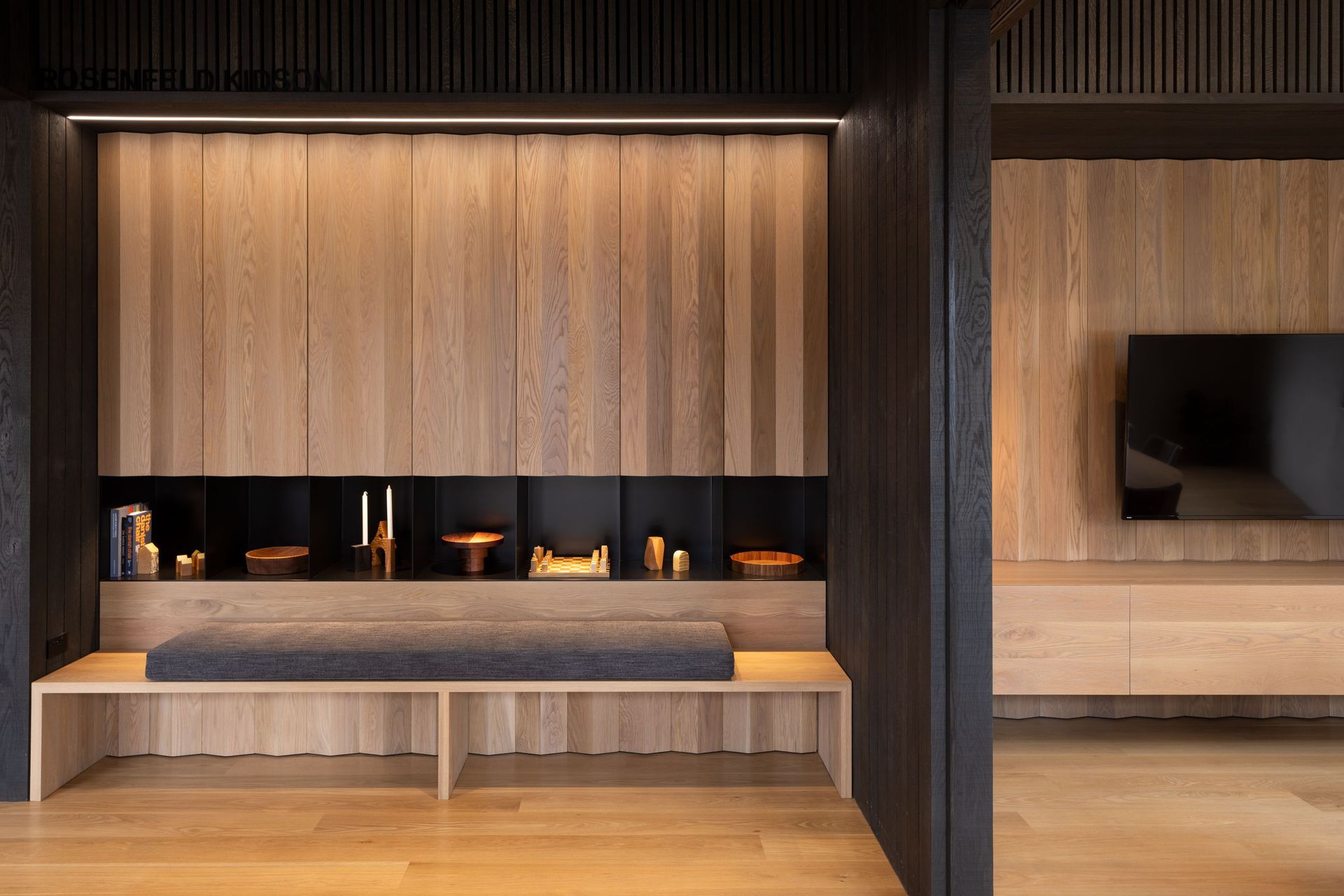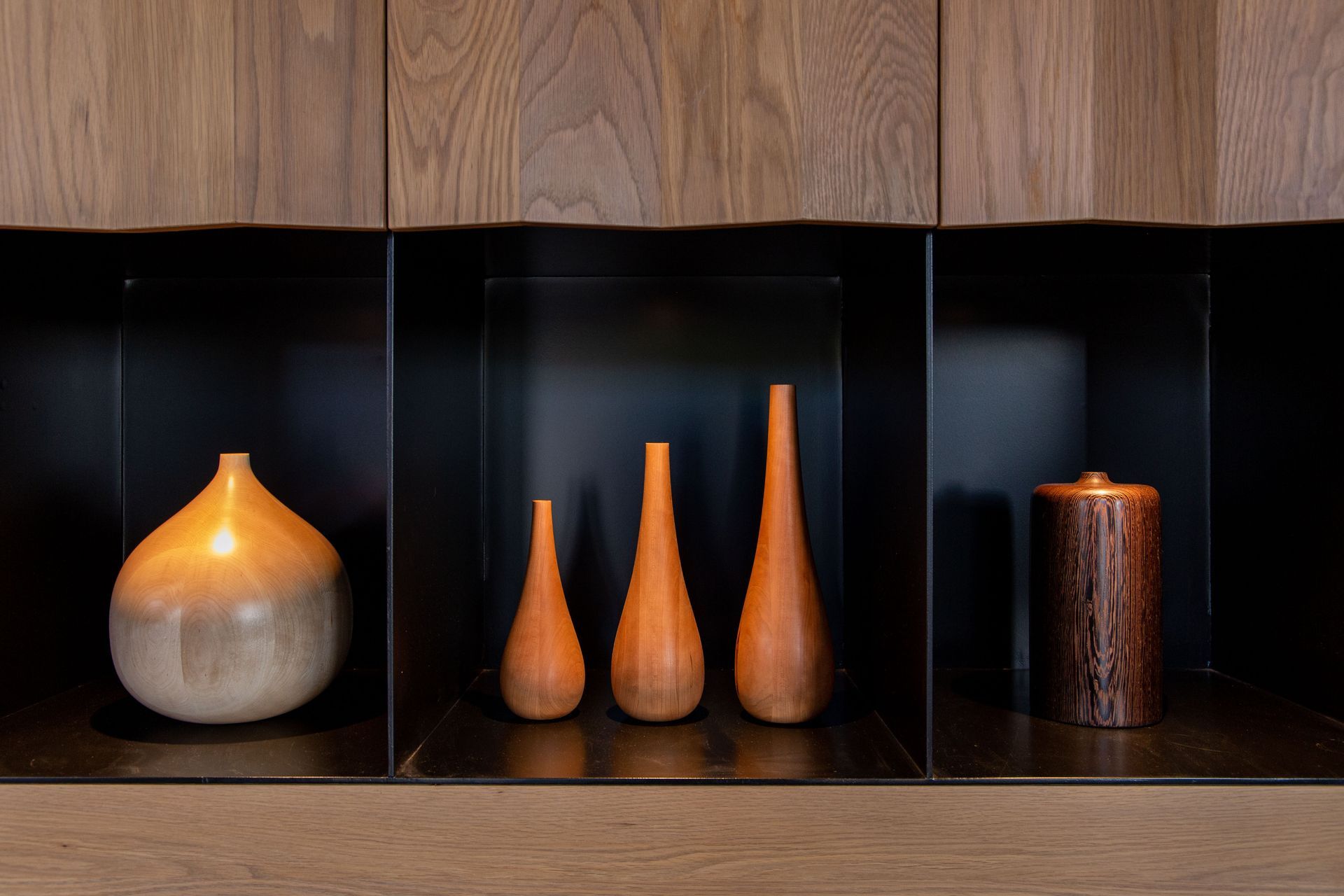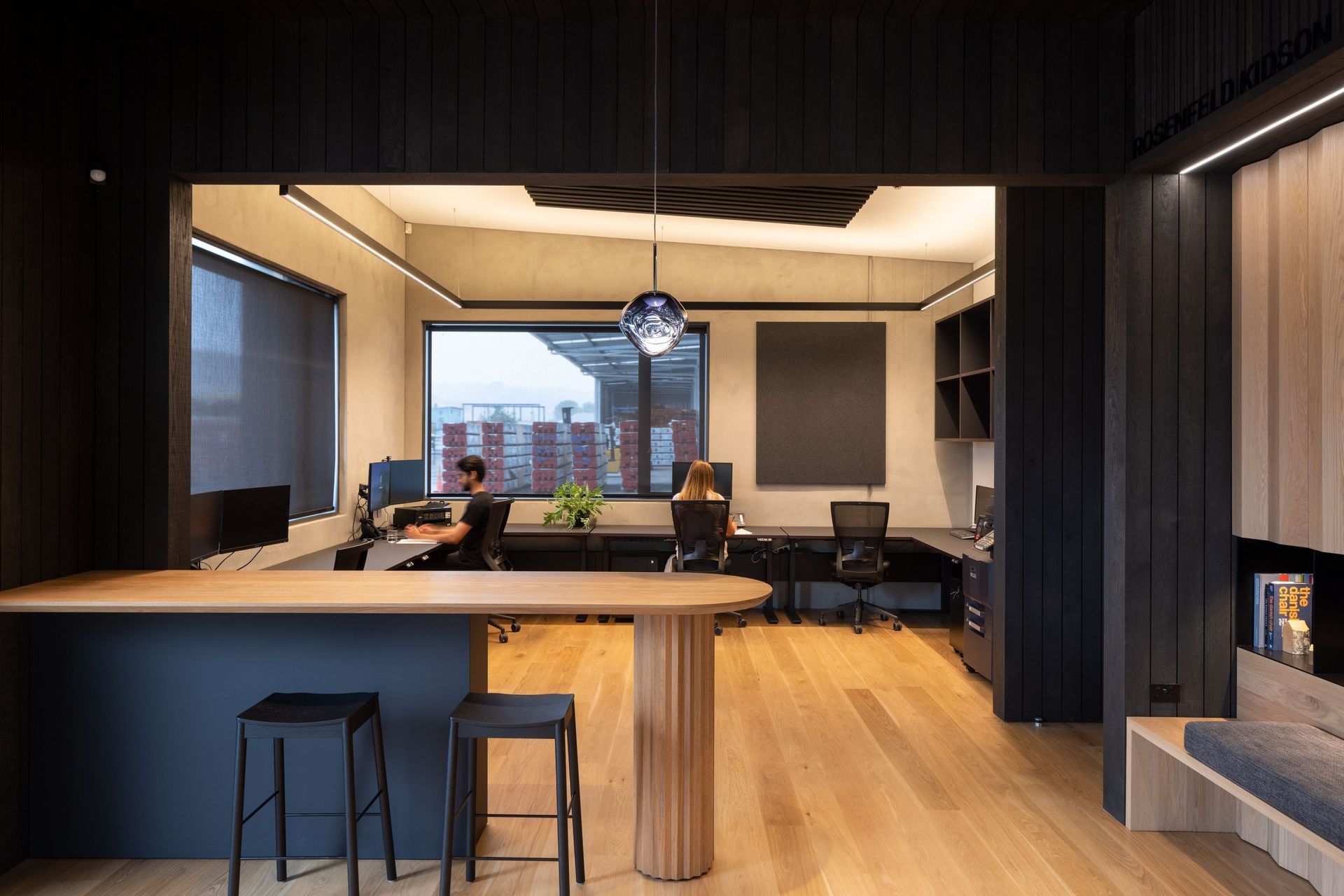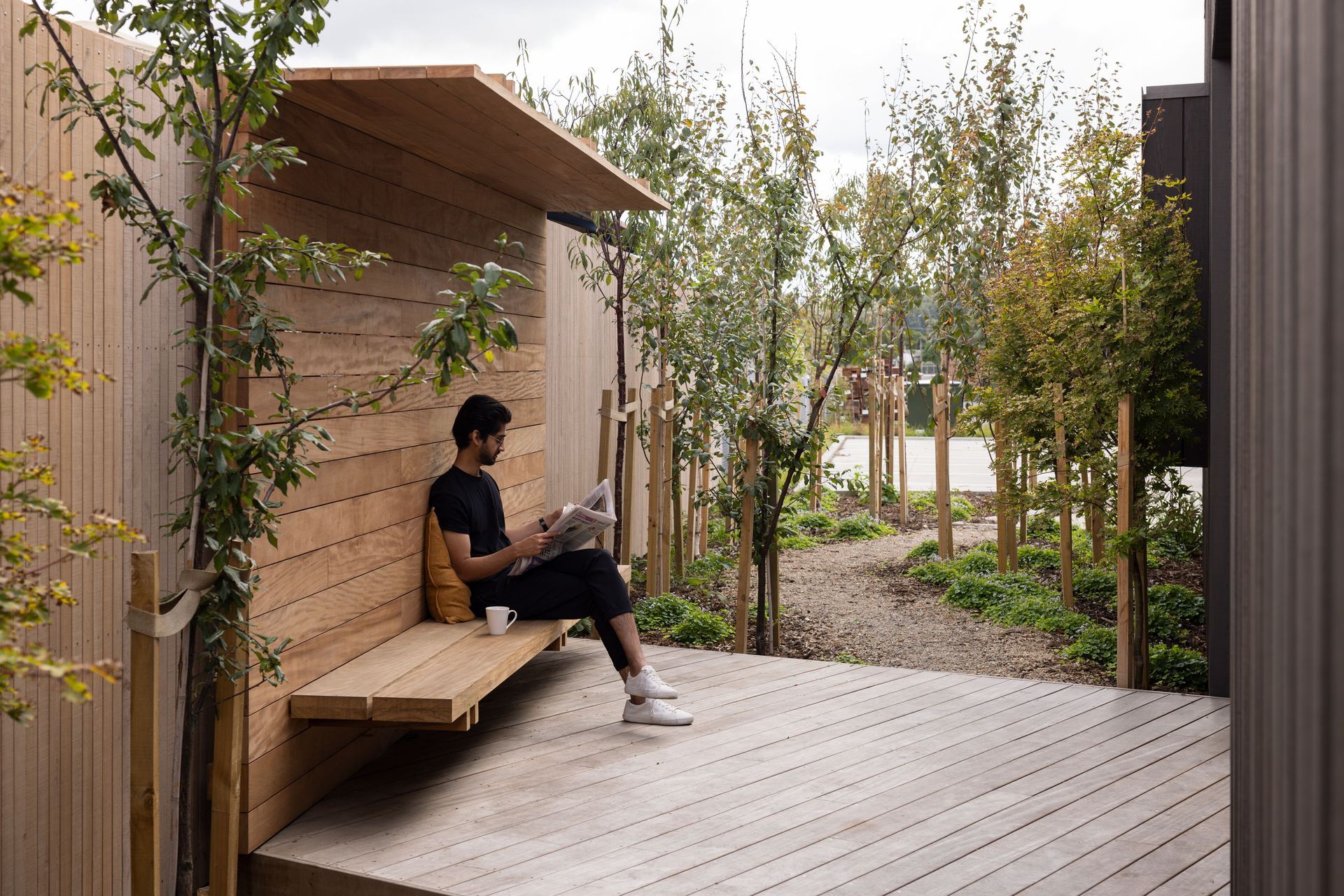A modern multifunctional workspace in industrial Auckland
Written by
30 August 2022
•
5 min read
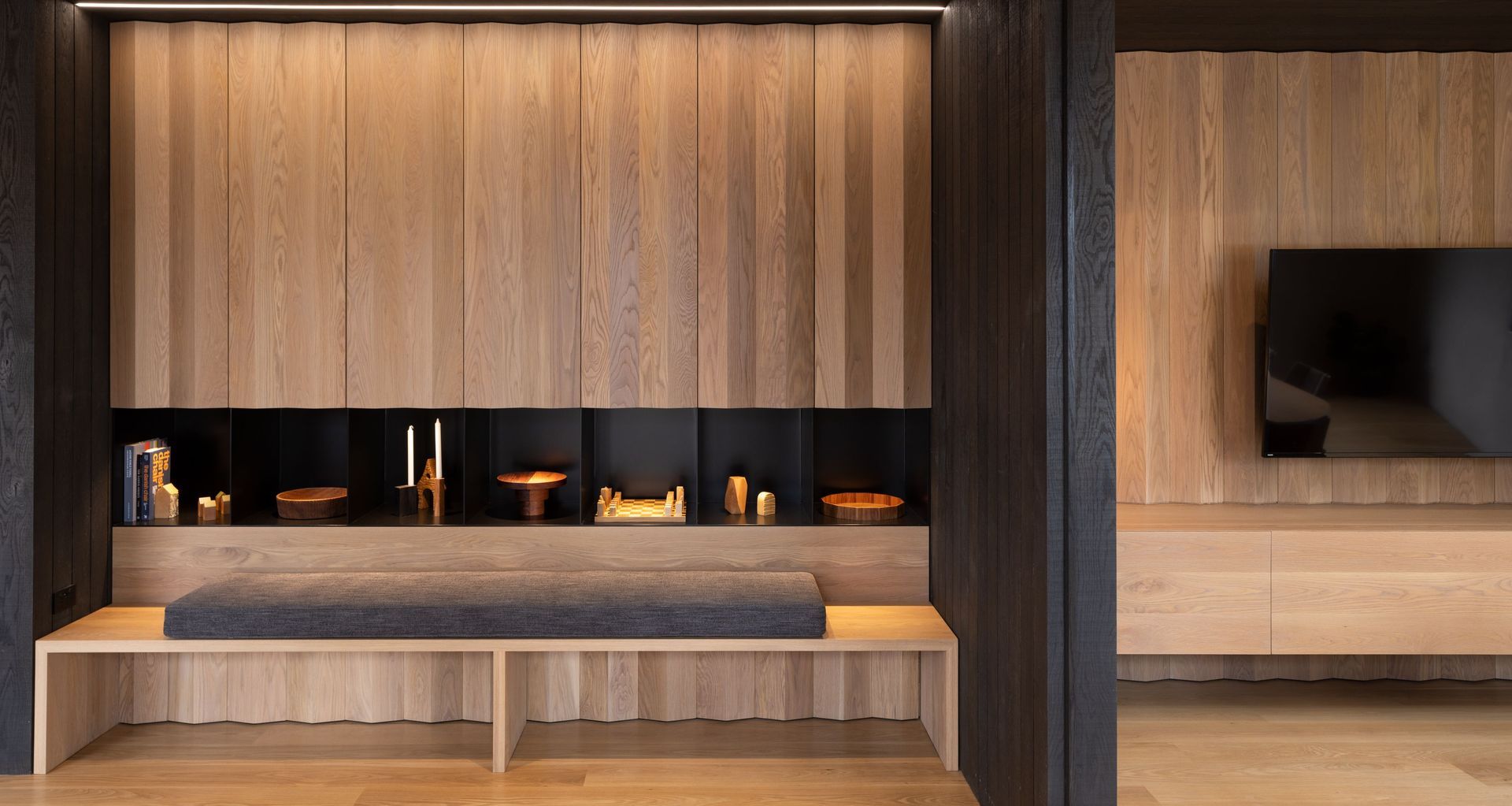
Roy Tebbutt of Strachan Group Architects had a treasure trove of quality materials to choose from when designing Rosenfeld Kidson’s office and staff room.
Rosenfeld Kidson is a specialist timber distributor with its head office based in Auckland, and when Strachan Group undertook a design review during the build of its large factory facility, Roy saw the opportunity to really highlight Rosenfeld Kidson’s own products in the new office space and make it a showroom too.
“The builder already had a design in place for the factory and office. We had a design review focused on the office area to see how we could enhance the structure provided. We reviewed it initially in terms of sun, access, kitchen spaces, how you enter the office space and relate to the staff and that sort of thing.”
But it quickly became clear there was an opportunity to showcase Rosenfeld Kidson’s products with just a slight pivot of the design. “We said, you’ve got this amazing source of materials. Why don’t you display them?”
There was no shortage of inspiration. “They have cladding, interior panelling, timber, flooring and outdoor products for decking and fences,” says Roy. “We thought we’d use each material and showcase it in this small space.”
Before Strachan Group became involved, the plan was to clad the office, like the factory, in aluminium panels. “Cedar is the main cladding product that Rosenfeld Kidson sells, so the exterior needed to showcase cedar. We chose to contrast two different profiles. We also used the company’s Interset recessed window flashing system around the aluminium joinery, as an example of how it can be done in a slightly different way, and integrated with some nice window eyebrow canopies that do some weather control.”
Even the sign above the door emphasises the timber materials. “It’s steel laser-cut lettering that was welded to a mounting plate and hung below the soffit,” says Roy. “We get that shadowing of Rosenfeld Kidson’s name back onto their own product, their cedar cladding, so there’s beautiful layering.”
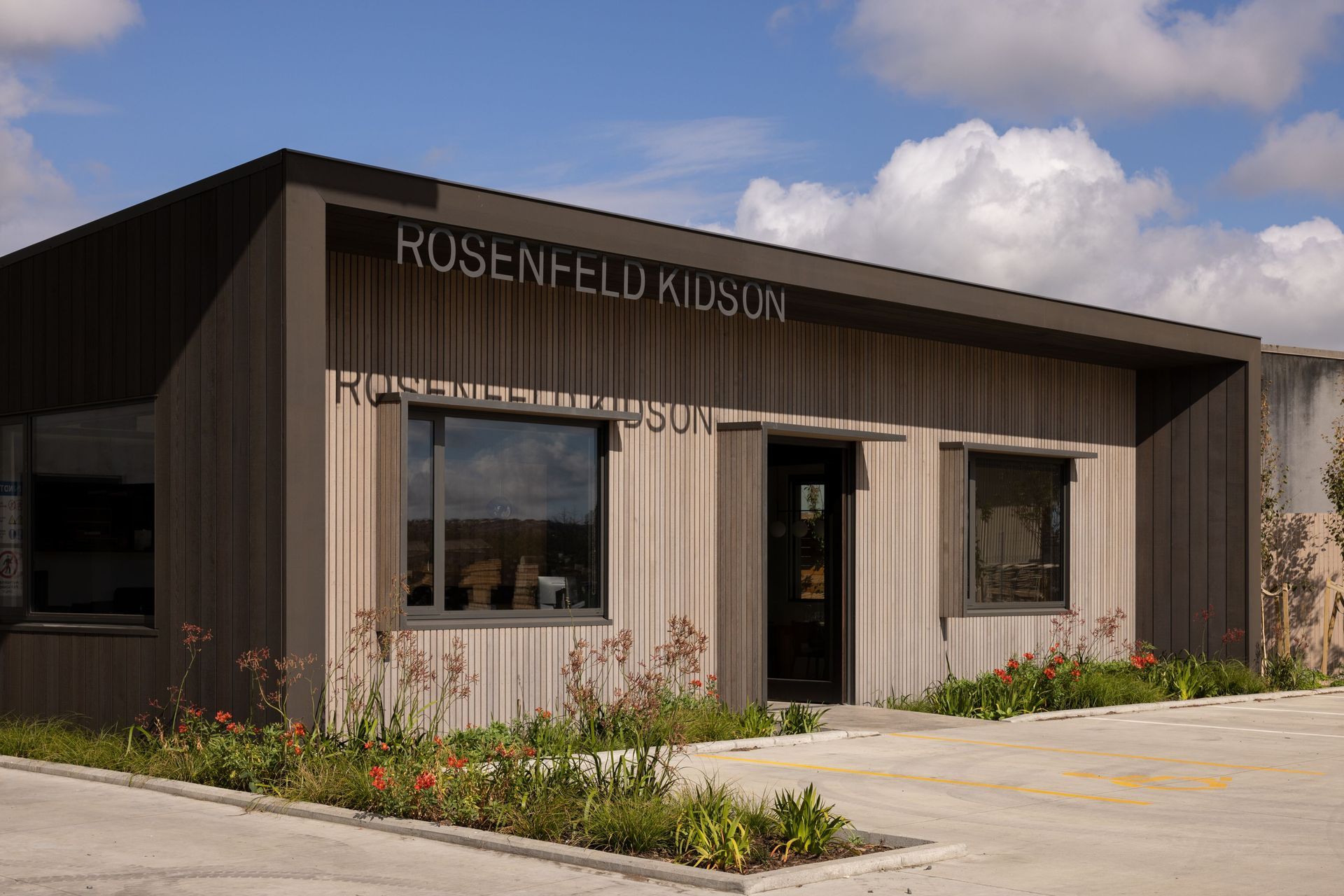
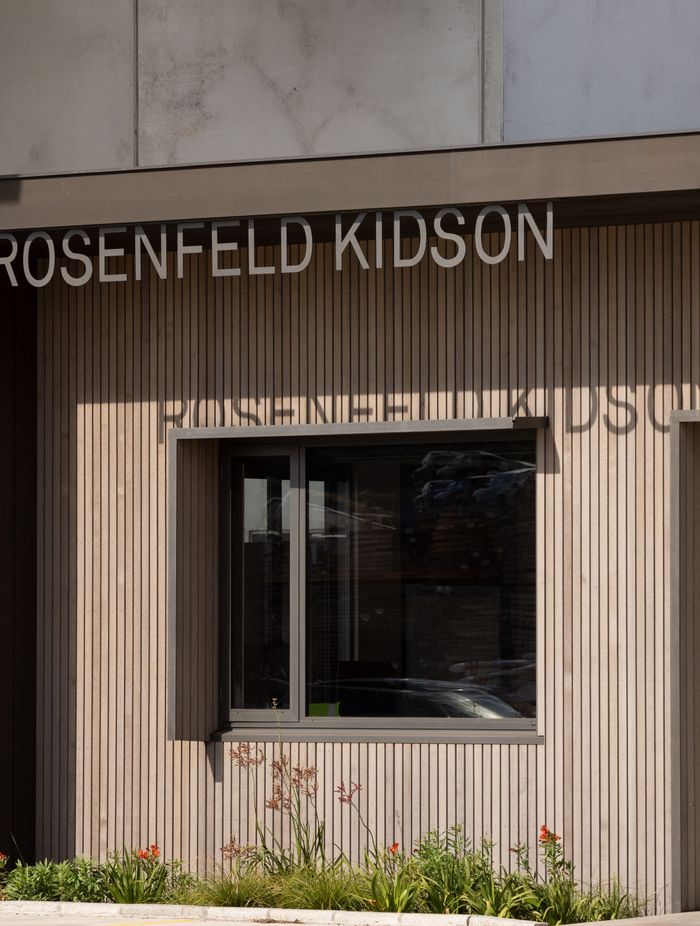
The showroom now serves multiple purposes, says Roy. “It’s only 128 square metres and includes the factory staff lunch room, store rooms, office space, meeting rooms and a foyer space to meet and greet. There’s quite a lot of function.”
To avoid overwhelming the busy interior with an array of finishes, it was decided to use oak in a few variations. “We went for it in oak. Flooring, wall panelling stained a nice dark colour, cabinetry with a slight grey wash, oak ceilings and furniture. It could have been an oak overload but they all complement each other.”
Cases were custom designed to display other timbers. “We created these cubby holes from black painted steel, with beautiful wood turned pieces in each species of Rosenfeld Kidson’s timber like walnut, iroko, American white ash, maples. It’s a subtle way of showing different timbers without having panels of it everywhere.”
The simplicity carries through to the outdoor area, introduced by Strachan Group for staff wellbeing. “We integrated a deck area and seating into the landscape design. The fence screen wraps up and over to provide shade when staff sit in the afternoon sun. It showcases cedar, garapa and larch, all in the same colour palette so as not to appear busy. We’ve resisted showing too many materials, the palette is reasonably restrained.”
Roy says the fence and the rear of the building create shelter from the wind and screen a neighbouring factory.
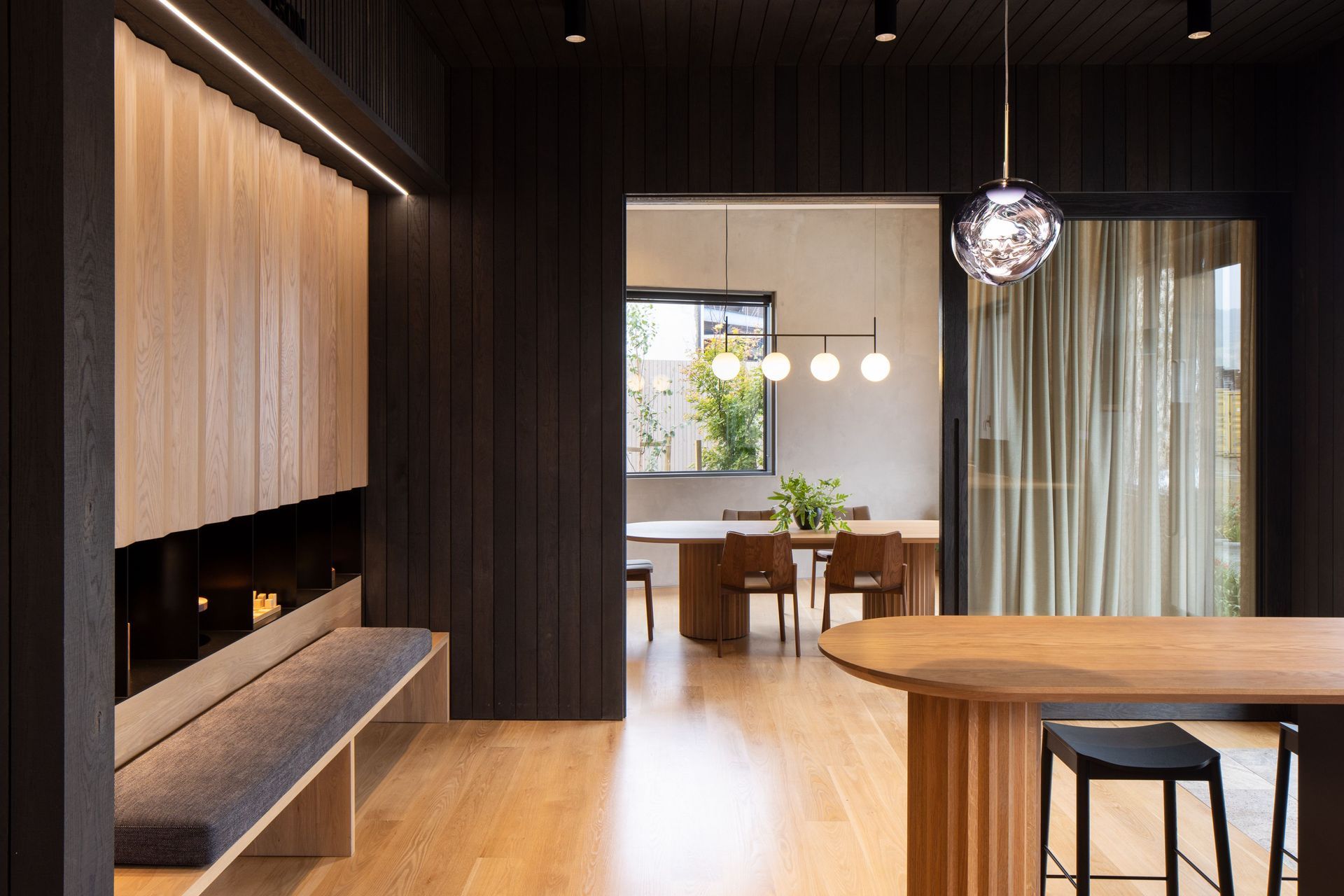
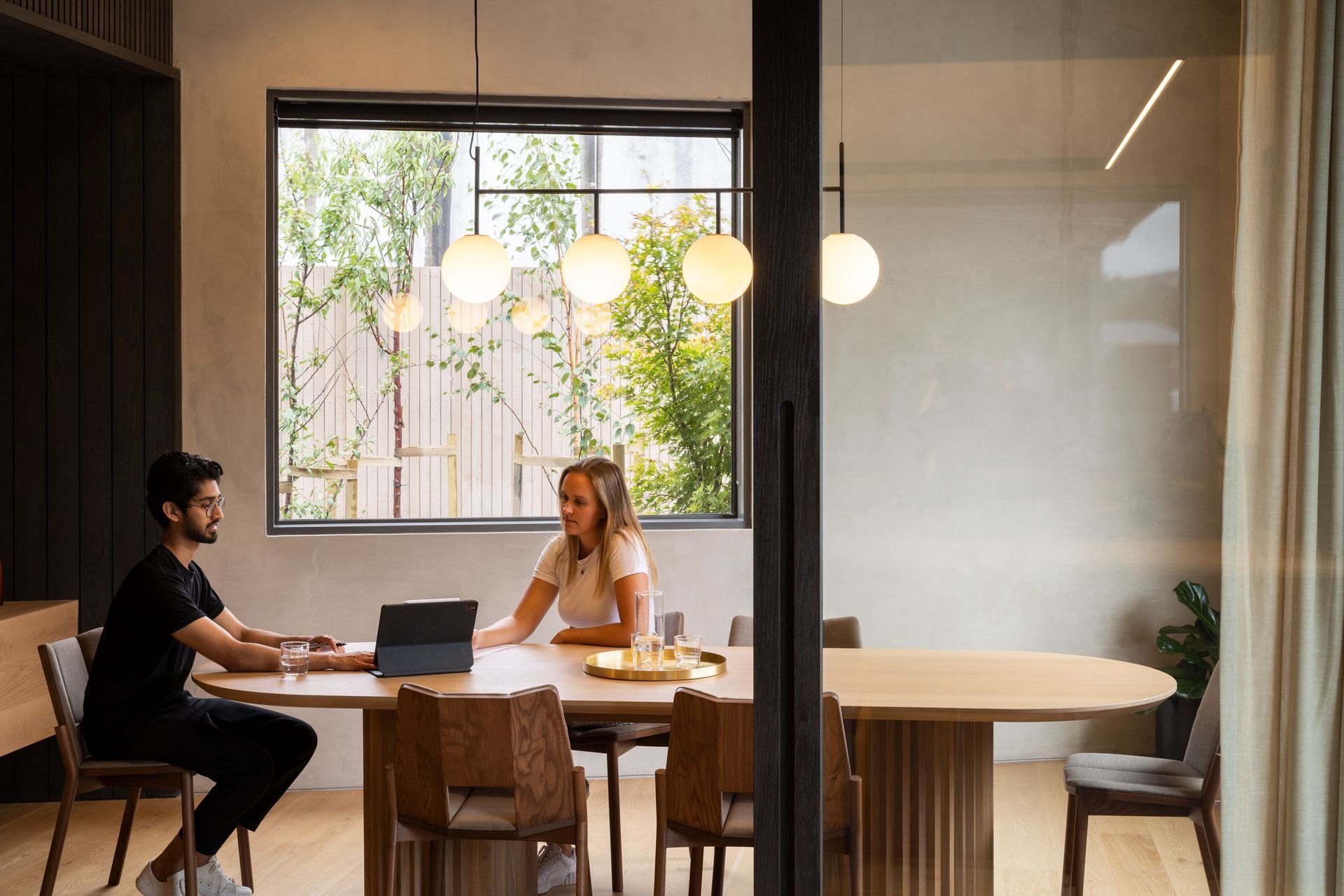
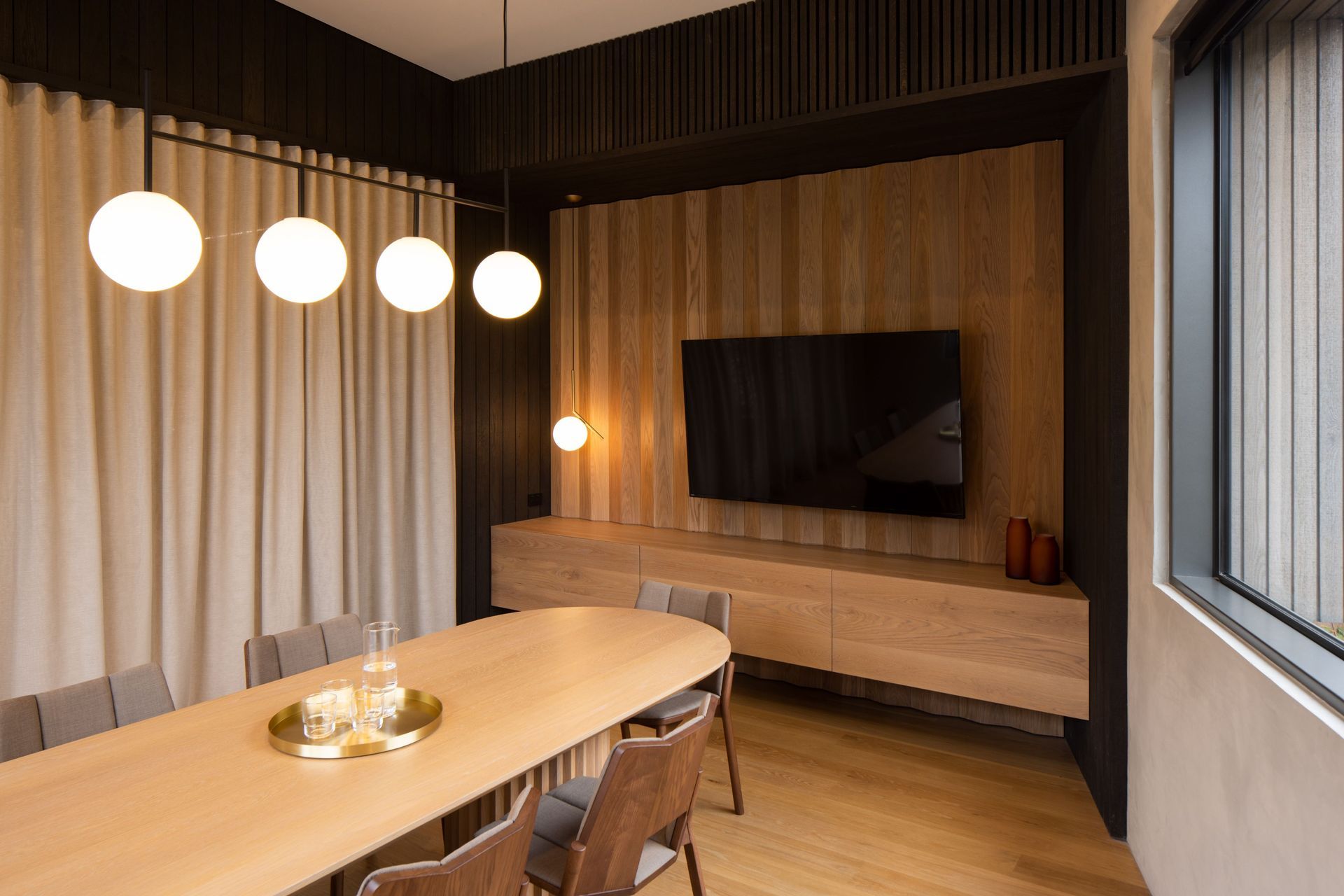
Because the building is multifunctional there are plenty of other considerations. It is a commercial office space so has requirements such as accessible toilets. “We worked quite hard to integrate the air conditioning system. The building gets great morning sun and warms up anyway but the air conditioning moderates the temperature throughout the year and the ducts and grilles are hidden in slatted panels in the bulkheads.”
However the spaces do have a homely feel, says Roy. “Lighting and pendants really finish off an interior. They create a mood and pick up the features of the architecture or the materials. You need a good general level of lighting to do the tasks that are required in some spaces. But then how do you take it to another level beyond that?”
Furniture and fabric choices also matter. Roy had several pieces of furniture custom made in oak. “We got to do the full interior package. Full interior drawings, including the fabric and furnishings. We do it a lot on our residential projects but not so much on a commercial project. So often the commercial ones are very budget driven but this was more about showcasing product.”
The staff love their new workplace and Roy is happy about that. “It's a methodology that we would use on any project, whether residential or commercial. All of these elements are considered anyway. In saying that, it was an amazing opportunity to take all the timber products that we love, and use them all in one place and not be constrained. It was a nice process.”
